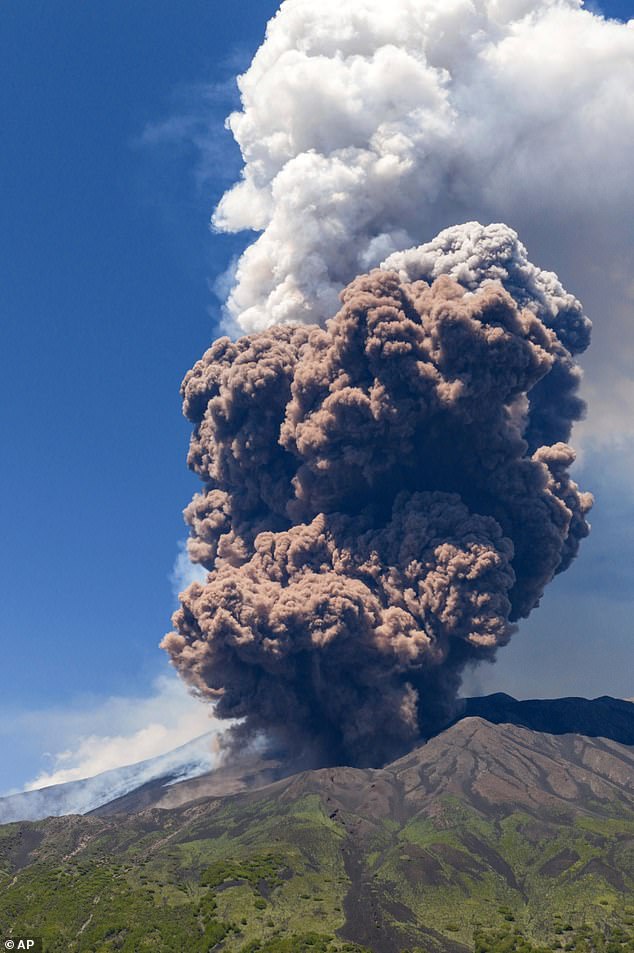
Scientists Warn Hundreds of Dormant Volcanoes Poised to Erupt with Unprecedented Explosive Power
Climate Change Could Trigger More Volcanic Eruptions, Study Warns
A volcano’s eruption is a raw display of Earth’s power, with molten rock, ash, and gases bursting from depths to the surface. Recent eruptions in Italy’s Mount Etna and Indonesia’s Mount Lewotobi Laki-Laki highlight the unpredictability of these fiery giants. Now, scientists warn that climate change could awaken hundreds of dormant volcanoes, leading to more frequent—and explosive—eruptions.
Melting Glaciers: A Hidden Catalyst
Researchers from the University of Wisconsin-Madison suggest melting glaciers, driven by rising global temperatures, may destabilize volcanoes by altering pressure on magma chambers. As ice retreats, the loss of weight on Earth’s crust allows gases in magma to expand, triggering eruptions.
[Image: Mount Etna erupting, spewing ash four miles high. Caption: Europe’s most active volcano, Mount Etna, has erupted 14 times in recent months.]
The team studied six volcanoes in southern Chile, including Mocho-Choshuenco, using argon dating and crystal analysis. They found that during the last ice age (26,000–18,000 years ago), thick ice suppressed eruptions, allowing magma to build up 15km underground. When glaciers melted rapidly, pressure shifts caused explosive eruptions.
“Glaciers act as a lid, keeping eruptions subdued. But as they vanish, volcanoes become more active,” explained lead researcher Pablo Moreno-Yaeger. Areas like North America, New Zealand’s Taupō, and Russia’s Kamchatka Peninsula—home to ice-covered volcanoes—could face heightened risks.
Global Climate Impacts
Eruptions inject aerosols into the atmosphere, which can temporarily cool the planet. For example, 1991’s Mount Pinatubo eruption lowered global temps by 0.5°C. However, frequent eruptions release greenhouse gases like CO₂, accelerating long-term warming. “This creates a dangerous feedback loop: melting ice triggers eruptions, which worsen warming,” said Moreno-Yaeger.
[Image: Indonesia’s Mount Lewotobi Laki-Laki erupting. Caption: This July 2025 eruption sent ash 3 miles high, disrupting regional flights.]
Spotlight on High-Risk Volcanoes
- Yellowstone Supervolcano (USA): A magma reservoir beneath this giant could unleash an eruption 100x stronger than 1883’s Krakatoa.
- Mount Spurr (Alaska): Increased seismic activity suggests this ice-covered volcano near Anchorage may soon erupt.
[Image: Mount Spurr’s snowy peak. Caption: Scientists monitor seismic shifts at this 11,000-foot Alaskan volcano.]
A Call for Vigilance
The study, presented at the Goldschmidt Conference, underscores the need to monitor glaciers and volcanoes in tandem. While predicting eruptions remains complex—relying on gas emissions, seismic activity, and ground deformation—understanding climate-driven triggers is now critical. As Moreno-Yaeger warns: “The interaction between ice loss and volcanism is a global phenomenon we can no longer ignore.”
[Image: Volcanic monitoring tools. Caption: Scientists track gas emissions and seismic shifts to predict eruptions.]
Final Note
From Iceland’s recent volcanic surges to Antarctica’s ice-covered peaks, Earth’s fiery underbelly is stirring. As glaciers vanish, we may face not only rising seas but an uptick in volcanic fury, reshaping both landscapes and climate.
(Approx. 600 words)


